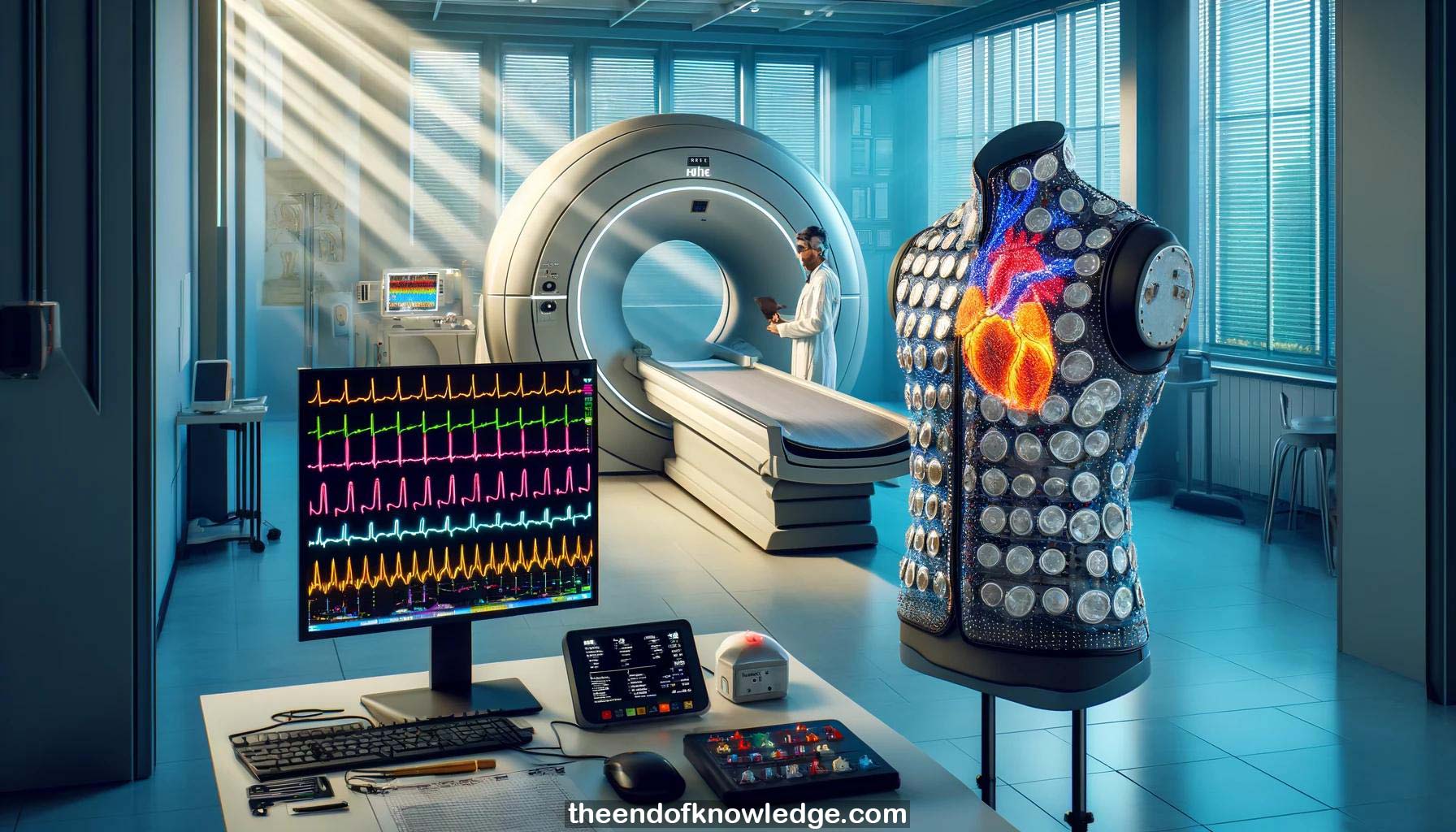 >
>
Concept Graph & Resume using Claude 3 Opus | Chat GPT4 | Llama 3:
Resume:
1.-Dr. Gabby discussed developing a non-invasive in vivo whole physiological mapping system to work alongside cardiovascular magnetic resonance (CMR) imaging.
2.-Electrophysiological mapping looks at electrical wavefronts traveling across the beating heart to identify deranged electrophysiology linked to arrhythmias.
3.-Current invasive electrophysiological mapping methods like electrode socks and catheters provide robust data but are not feasible for large-scale use.
4.-Electrocardiographic imaging (ECGI) collects high-resolution ECGs from the chest surface and uses an inverse solution algorithm to generate epicardial maps.
5.-Dr. Gabby's group developed a vest to link the rich cardiac MRI data with the patient's personalized electrophysiological map.
6.-Cardiac MRI provides detailed non-invasive information about myocardial substrate health, mechanics, perfusion, scar, and more without radiation.
7.-Initial vest prototypes used embroidered textile electrodes. The current version uses GTEC G-Sahara dry electrodes that don't require shaving.
8.-The vest recording takes 5 minutes, and donning/doffing the vest is quick, enabling high throughput. Over 800 patients have used it.
9.-Co-registering electrode positions originally used a "mirror vest" with MRI markers. A new synthetic approach just requires corner markers.
10.-The vest provides excellent quality ECG data across 256 channels. A ground electrode over the right shoulder improves results.
11.-Anatomical CMR data is collected using a high-resolution transaxial HASTE stack covering the entire torso.
12.-Signal averaging of the ECG data is done using in-house MATLAB code. Heart segmentation is currently manual but automating it is planned.
13.-Professor Rudy's extensively validated inverse solution algorithm is used to generate 1000-node epicardial maps, except for the septum.
14.-Unipolar electrograms allow extracting activation time, repolarization time, and activation recovery interval (ARI) as key electrophysiological biomarkers.
15.-ARI mirrors action potential duration. Changes in ARI are more pronounced in diseased myocardium.
16.-The vest and analysis pipelines have demonstrated good test-retest reproducibility, a key requirement for clinical use.
17.-The vest was used to study electrophysiological profiles in 500 participants aged 70+ from the famous 1946 British birth cohort.
18.-Another study of cardiac amyloidosis patients showed ECGI provides earlier insights into disease mechanisms compared to 12-lead ECG.
19.-In hypertrophic cardiomyopathy, ECGI distinguished high vs low sudden cardiac death risk and identified subclinical disease missed by ECG.
20.-In arrhythmogenic cardiomyopathy, abnormal ECGI signatures correlated with areas of scar. More work is needed on risk stratification.
21.-Dr. Gabby's group is using ECGI and CMR to develop 4D electromechanical heart models to predict arrhythmia and sudden death risk.
22.-Limitations of ECGI include upfront equipment costs, some remaining need for clinical validation, and challenges with the inverse solution.
23.-Compared to Medtronic's single-use ECGI vest for CT, their reusable vest is more cost-effective and works with MRI.
24.-Electrodes are placed across the entire chest because heart position varies and complete coverage is needed for the inverse solution.
25.-The ECGI inverse problem is similar to EEG/MEG but complicated by the heart's greater distance from electrodes and intervening structures.
26.-The one-size vest fits most adults, with adjustable Velcro straps. A pediatric version is planned. Obese patients are usually excluded.
27.-G-Sahara electrodes make good skin contact even with chest hair, eliminating the need for shaving. Their large surface helps reliability.
28.-Medtronic's vest is single-use because washing would damage the inbuilt electronics. This raises environmental sustainability concerns.
29.-No artifacts from neighboring organs affect the ECGI, but motion artifacts during exercise recordings require denoising.
30.-With over 800 patients recorded, the vest enables large-scale studies and has potential for clinical translation with further validation.
Knowledge Vault built byDavid Vivancos 2024